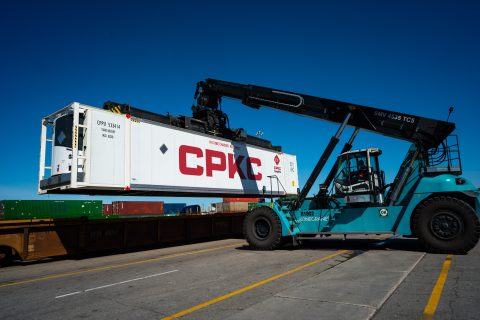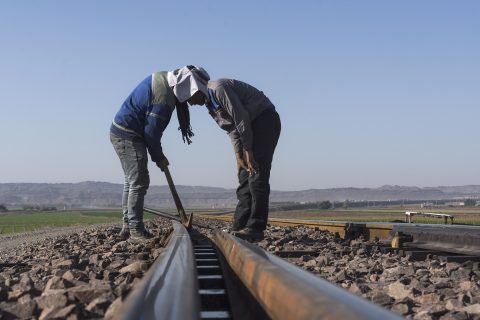Northern Italy prepares to handle more 750-metre trains

The rail infrastructure in Lombardy, in northern Italy, is getting ready to accommodate 750-metre freight trains. Two tracks were adapted to handle longer trains at the Gallarate stations, near the Hupac’s terminal in Busto Arsizio, northwest of Milan. Moreover, three tracks and one shunting track, all 750 metres long, will soon be implemented at the rail terminal in Brescia, 95 kilometres east of Milan.
Both initiatives are parts of projects aimed at increasing rail freight capacity in the area. Both Gallarate and Brescia are key sections of the TEN-T network. The former sits at the beginning of the Rhine-Alpine Corridor, which starts in Genoa and runs all the way to Rotterdam. The latter is part of the Mediterranean Corridor, located between Milan and Verona, two of the major cities in the north of Italy.
Despite both projects being carried out by Italian infrastructure manager Rete Ferroviaria Italiana (RFI), rail freight giant Hupac can especially benefit from both initiatives. The Swiss company manages the rail terminal in Busto Arsizio, one of the largest in its network. On the other hand, a brand new terminal is being built in Brescia in a partnership between the Italian railway holding Ferrovie dello Stato and Hupac.
Gallarate/Busto Arsizio terminal upgrade
As RFI pointed out, this project is the first phase of a project that will be completed by implementing a Multistation Central Computerised System (Acc-M). The Acc-M, which will be implemented by Italian tech firm Sirti, will allow train circulation in a digital way. More specifically, the new system can monitor convoys in different stations on one line. As Sirti underlined, this solution integrates the local station control and train spacing functions with those of railway signaling management.
The new terminal in Brescia
The facility under construction in Brescia, denominated La Piccola Velocità (The Small Speed), will cover a surface area of 100,000 square metres. Works were expected to start in early 2024, but it seems that things have sped up and some works are already underway. The terminal should be up and running by 2026, with eleven daily trains forecasted to travel to and from it. Other than the new tracks, there will also be five tracks for temporary stops, three support tracks, and three electric rail-mounted gantry cranes.
Also read:





